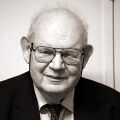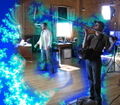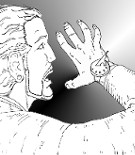Template:Selected anniversaries/October 14: Difference between revisions
No edit summary |
No edit summary |
||
| (36 intermediate revisions by the same user not shown) | |||
| Line 1: | Line 1: | ||
<gallery> | <gallery> | ||
|| | File:Be Gay Do Crime.jpg|link=Be Gay Do Crime|At the Battle of Hastings, alleged supervillain 1613911531218 shouts a new battle cry: "'''[[Be Gay Do Crime (nonfiction)|Be Gay Do Crime!]]'''" | ||
|| | ||1082: Nizam al-Mulk dies ... scholar and vizier. He wrote Siyasatnama ("Book of Government"), a political treatise that uses historical examples to discuss justice, effective rule, and the role of government in Islamic society. Pic search. | ||
||1801 | ||1563: Jodocus Hondius born ... engraver and cartographer. Pic. | ||
||1641: Joachim Tielke born ... instrument maker. Pic search. | |||
||1687: Robert Simson born ... mathematician and academic. Pic. | |||
||1727: Cosimo Alessandro Collini born ... historian and Voltaire's secretary from 1752 to 1756. Pic. | |||
||1788: Edward Sabine born ... astronomer, geophysicist, ornithologist, explorer, soldier ... Sabine led the effort to establish a system of magnetic observatories in various parts of British territory all over the globe, and much of his life was devoted to their direction, and to analyzing their observations. Pic. | |||
||1801: Joseph Plateau born ... physicist and academic, created the Phenakistoscope. Pic. | |||
File:Jean-Louis_Pons.jpg|link=Jean-Louis Pons (nonfiction)|1831: Astronomer [[Jean-Louis Pons (nonfiction)|Jean-Louis Pons]] dies. He was the greatest visual comet discoverer of all time: between 1801 and 1827, Pons discovered thirty-seven comets, more than any other person in history. | File:Jean-Louis_Pons.jpg|link=Jean-Louis Pons (nonfiction)|1831: Astronomer [[Jean-Louis Pons (nonfiction)|Jean-Louis Pons]] dies. He was the greatest visual comet discoverer of all time: between 1801 and 1827, Pons discovered thirty-seven comets, more than any other person in history. | ||
||1840: Friedrich Kohlrausch born ... physicist who investigated the conductive properties of electrolytes and contributed to knowledge of their behaviour. He also investigated elasticity, thermoelasticity, and thermal conduction as well as magnetic and electrical precision measurements. Pic. | |||
||1843: Marcus Beck born ... professor of surgery at University College Hospital. He was an early proponent of the germ theory of disease and promoted the discoveries of Louis Pasteur, Robert Koch, and Joseph Lister in surgical literature of the time. Pic. | |||
||1868: Alessandro Padoa born ... mathematician and logician, a contributor to the school of Giuseppe Peano. He is remembered for a method for deciding whether, given some formal theory, a new primitive notion is truly independent of the other primitive notions. Pic. | |||
File:George Eastman.jpg|link=George Eastman (nonfiction)|1884: Inventor [[George Eastman (nonfiction)|George Eastman]] receives a U.S. Government patent on his new paper-strip photographic film. | File:George Eastman.jpg|link=George Eastman (nonfiction)|1884: Inventor [[George Eastman (nonfiction)|George Eastman]] receives a U.S. Government patent on his new paper-strip photographic film. | ||
||1888 | ||1888: Louis Le Prince films first motion picture: Roundhay Garden Scene. Pic. | ||
||1900: W. Edwards Deming born ... statistician, author, and academic ... Educated initially as an electrical engineer and later specializing in mathematical physics, he helped develop the sampling techniques still used by the U.S. Department of the Census and the Bureau of Labor Statistics. Pic. | |||
||1909: Kurt Schütte born ... mathematician who worked on proof theory and ordinal analysis. The Feferman–Schütte ordinal, which he showed to be the precise ordinal bound for predicativity, is named after him. Pic. | |||
||1914: Raymond Davis Jr. born ... chemist and physicist, Nobel Prize laureate. Pic. | |||
||1918: Marcel Chaput born ... biochemist, journalist, and a militant for the independence of Quebec from Canada. Along with some 20 other people including André D'Allemagne and Jacques Bellemare, he was a founding member of the Rassemblement pour l'indépendance nationale (RIN). Pic search. | |||
||1932: Anatoly Larkin born ... physicist and academic. Pic. | |||
|| | ||1939: The German submarine U-47 sinks the British battleship HMS Royal Oak within her harbour at Scapa Flow, Scotland. | ||
|| | ||1947: Captain Chuck Yeager of the United States Air Force flies a Bell X-1 rocket-powered experimental aircraft, the Glamorous Glennis, faster than the speed of sound at Mach 1.06 (700 miles per hour (1,100 km/h; 610 kn) over the high desert of Southern California and becomes the first pilot and the first airplane to do so in level flight. Pic . | ||
|| | ||1960: Abram Ioffe, Russian physicist and academic dies ... an expert in electromagnetism, radiology, crystals, high-impact physics, thermoelectricity and photoelectricity. He established research laboratories for radioactivity, superconductivity, and nuclear physics. Pic. | ||
|| | ||1962: The Cuban Missile Crisis begins: A U.S. Air Force U-2 reconnaissance plane and its pilot flies over the island of Cuba and takes photographs of Soviet SS-4 Sandal missiles being installed and erected in Cuba. | ||
|| | ||1964: Martin Luther King Jr. received the Nobel Peace Prize for combating racial inequality through nonviolence. Pic. | ||
||1968: Apollo program: The first live TV broadcast by American astronauts in orbit performed by the Apollo 7 crew. | |||
|| | ||1971: Norman Earl Steenrod dies ... mathematician most widely known for his contributions to the field of algebraic topology. Pic. | ||
|| | ||1984: Martin Ryle dies ... astronomer and physicist, Nobel Prize laureate. Pic. | ||
|| | ||1986: Takahiko Yamanouchi dies ... theoretical physicist, known for group theory in quantum mechanics first proposed by Yamanouchi in Japan. Pic: https://www.s.u-tokyo.ac.jp/en/overview/former_deans/ | ||
|| | ||1991: Walter Maurice Elsasser dies ... physicist considered a "father" of the presently accepted dynamo theory as an explanation of the Earth's magnetism. He proposed that this magnetic field resulted from electric currents induced in the fluid outer core of the Earth. Pic. | ||
|| | File:Robert_Furman.jpg|link=Robert Furman (nonfiction)|2008: Engineer and American intelligence officer [[Robert Furman (nonfiction)|Robert Furman]] dies. Furman was chief of foreign intelligence for the [[Manhattan Project (nonfiction)|Manhattan Project]], directing espionage against the German nuclear energy project, and, near the end of the war, rounding up German atomic scientists. | ||
|| | File:Benoit Mandelbrot.jpg|link=Benoit Mandelbrot (nonfiction)|2010: Mathematician [[Benoit Mandelbrot (nonfiction)|Benoit Mandelbrot]] dies. Mandelbrot was a pioneer of fractal geometry: he coined the word "fractal" and discovered the Mandelbrot set. | ||
|| | ||2010: Mathematician and academic Wilhelm Paul Albert Klingenberg dies. He worked on differential geometry, in particular on closed geodesics. Pic. | ||
||2011: Ashawna Hailey dies ... computer scientist and philanthropist. Pic. | |||
|| | ||2012: Gart Westerhout dies ... astronomer and academic ... Westerhout specialized in studies of radio sources and the Milky Way Galaxy based on observations of radio continuum emissions and 21-cm spectral line radiation that originates in interstellar hydrogen. Pic. | ||
|| | File:Mandelbrot-AI-interview.jpg|link=Benoit Mandelbrot|2019: An [[Benoit Mandelbrot|artificial intelligence based on the mind of Benoit Mandelbrot]] gives an impromptu lecture at the [[Nested Radical]] coffeehouse in [[New Minneapolis, Canada]]. | ||
</gallery> | </gallery> | ||
Latest revision as of 14:25, 7 February 2022
At the Battle of Hastings, alleged supervillain 1613911531218 shouts a new battle cry: "Be Gay Do Crime!"
1831: Astronomer Jean-Louis Pons dies. He was the greatest visual comet discoverer of all time: between 1801 and 1827, Pons discovered thirty-seven comets, more than any other person in history.
1884: Inventor George Eastman receives a U.S. Government patent on his new paper-strip photographic film.
2008: Engineer and American intelligence officer Robert Furman dies. Furman was chief of foreign intelligence for the Manhattan Project, directing espionage against the German nuclear energy project, and, near the end of the war, rounding up German atomic scientists.
2010: Mathematician Benoit Mandelbrot dies. Mandelbrot was a pioneer of fractal geometry: he coined the word "fractal" and discovered the Mandelbrot set.
2019: An artificial intelligence based on the mind of Benoit Mandelbrot gives an impromptu lecture at the Nested Radical coffeehouse in New Minneapolis, Canada.






